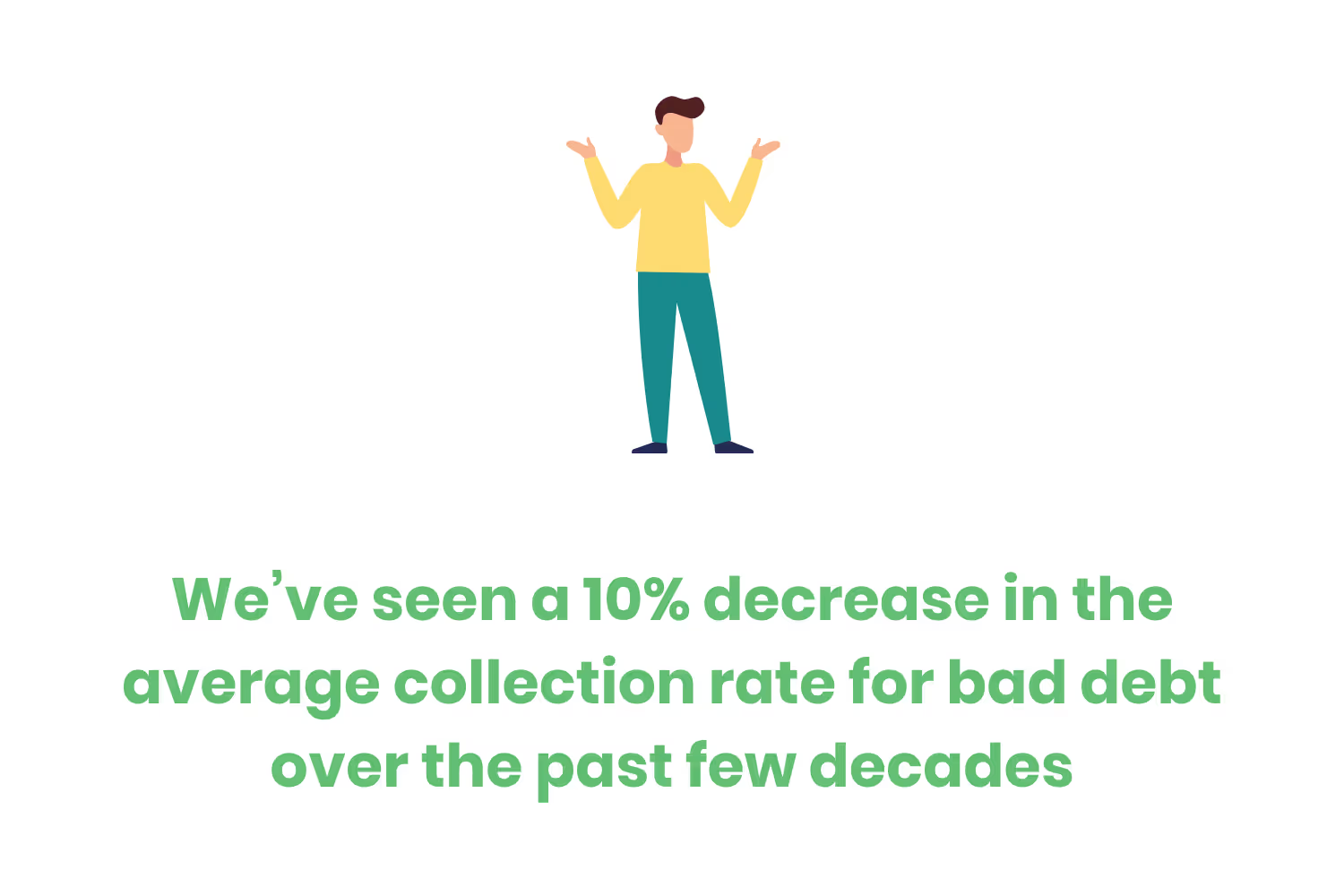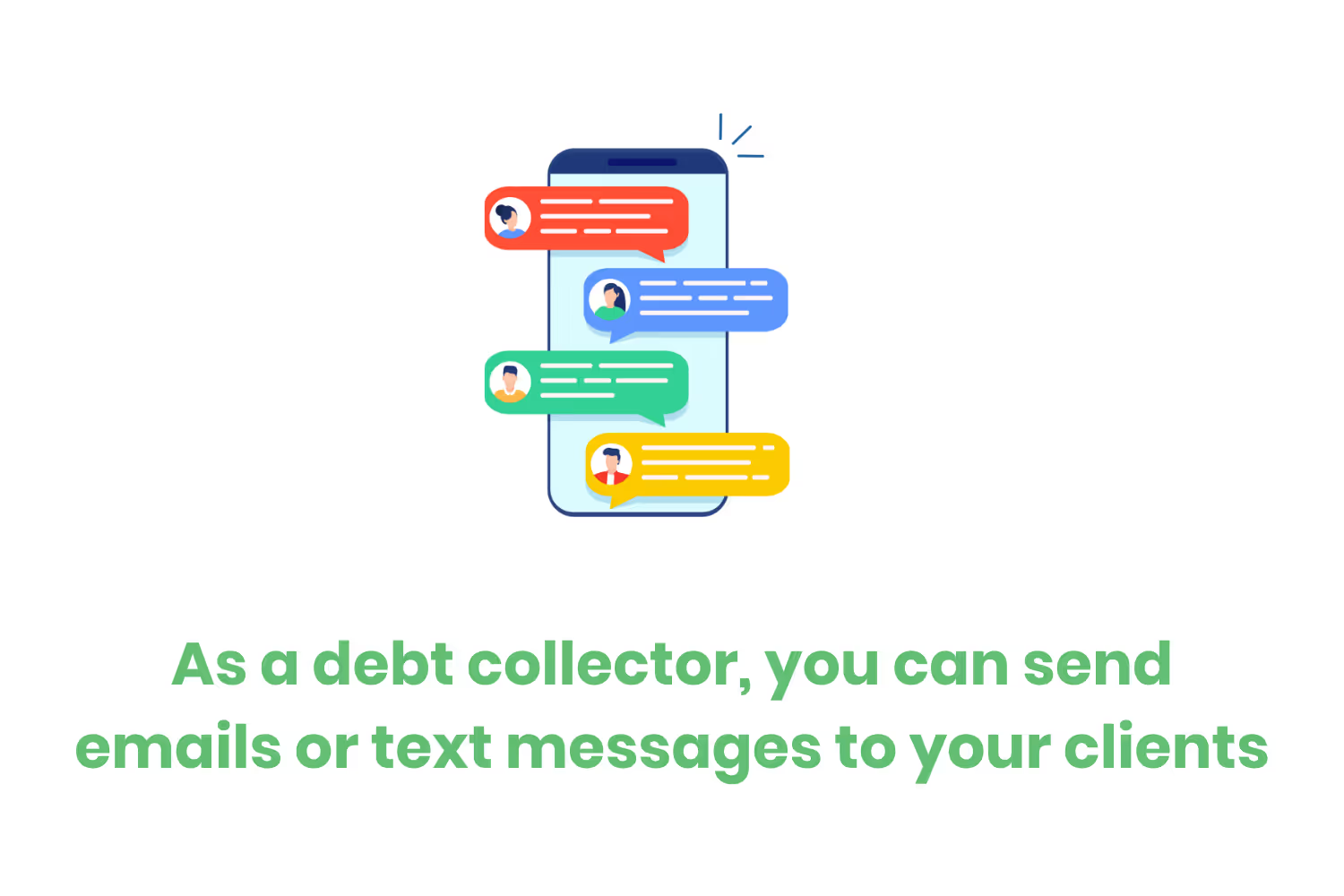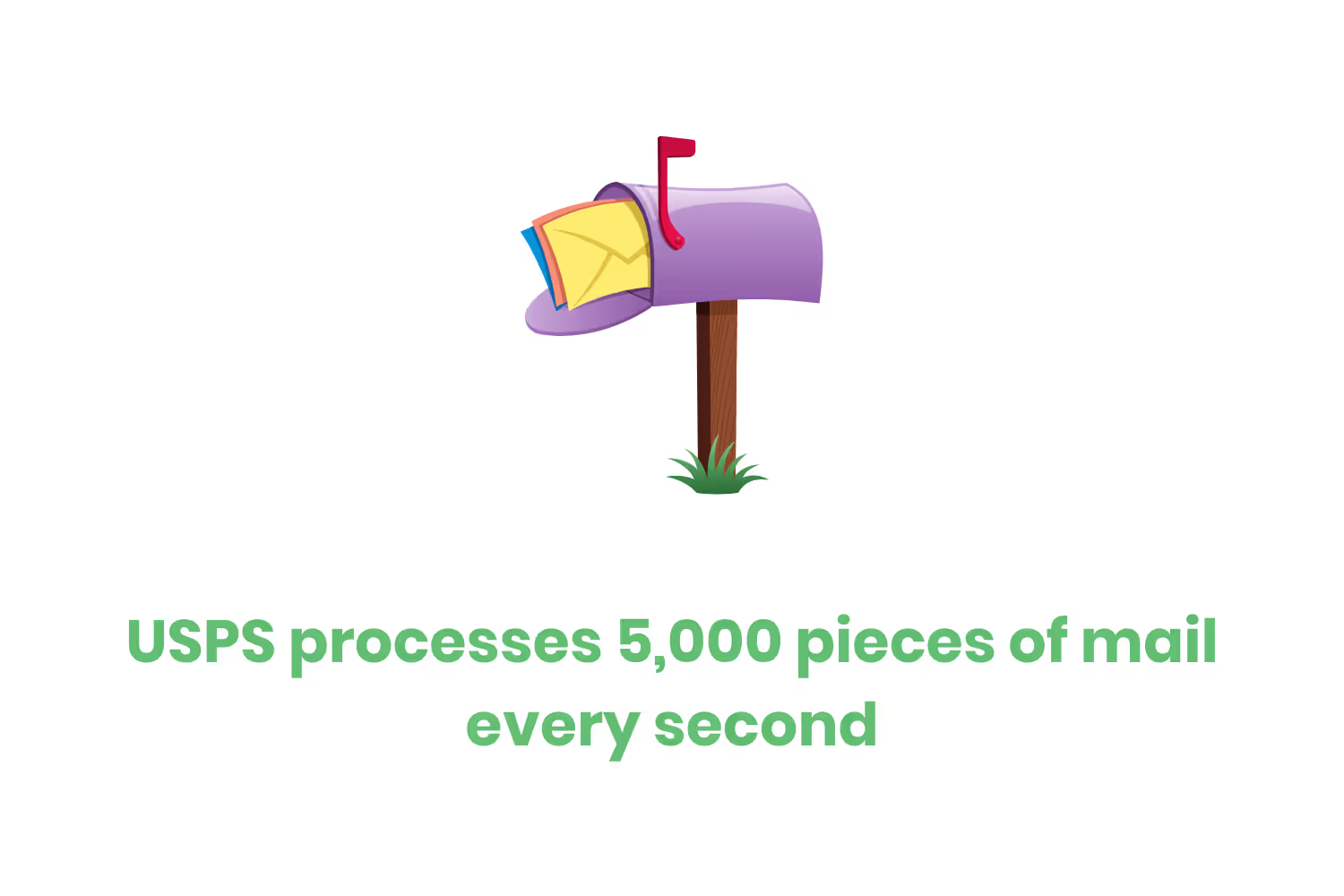7 Successful Debt Collection Techniques That Pay Dividends
What exactly are solid approaches to overdue balances? Here are 7 successful debt collection techniques that pay dividends.

When people hear the phrase “debt collection” their mind immediately travels to famous scenes from movies like Goodfellas and Widows.
Even Rocky Balboa dabbled in being a debt collector when he chased Bob around the docks for the $200 that Bob owed Rocky’s boss, Gazzo.
Unfortunately, Hollywood’s over-the-top interpretation of debt collecting isn’t accurate. It’s a reputable industry that many organizations rely on as a means to collect on way overdue revenue.
Not to mention the fact that collection agencies have to stay in compliance with the strict guidelines of the Fair Debt Collection Practices Act (FDCA).
The point I’m trying to make with all of this is that debt collectors are already at a disadvantage when it comes to trying to close out their client’s past due accounts because they’re viewed in a negative light.
To make matters worse, we’ve seen a 10% decrease in the average collection rate for bad debt over the past few decades.

In other words, if you’re a collections agency you have no choice but to ensure that the techniques you use are highly effective. Any mediocre attempt at collecting from bad debt accounts and you might as well chalk it up as a loss to your annual revenue.
But, what exactly are solid approaches to overdue balances?
Here are 7 successful debt collection techniques that pay dividends.
Technique 1: Keep The Law in Mind
I hinted at this in the introduction, but there is one giant, ever-looming law that collections agencies have to keep in mind while running their business, FDCA.
FDCA exists so that the collections industry doesn’t turn to practices similar to the Rocky scene from earlier. No one deserves to get chased by one of the best boxers of all time…especially for only $200.
FDCA details…
- Times collection agencies can reach out to clients
- Acceptable modes of communication
- Acceptable locations to send communication to
- That collection agencies must send validation letters
Although it might seem like FDCA exists as a form of micromanagement, it’s helpful.
You see, as a debt collector, you can send emails or text messages to your clients. You can send your debt notices to your client’s home or work. You just have to make sure that what you send is during business hours and that you send a debt validation letter.

Naturally, staying compliant with the law is a successful debt collection technique…which is why it’s the first one.
Technique 2: Communicate Effectively
At the end of the day, your ultimate goal when communicating with your clients is to close their outstanding debt.
You’re going to run into difficulty if your clients have a hard time understanding what they owe you.
There are two aspects to debt collection that ultimately matters: getting your debtor’s attention and convincing them to pay.
Once you get your debtor's attention (more on that later), you have a very small window of opportunity to convince them to pay their outstanding balance.
You see, the average attention span of human beings right now is a little over eight seconds long.

That means that once you catch the attention of your recipients, you have eight seconds to explain to them what they owe and how to pay you. If you can’t communicate those two facets to your recipients, you’re going to have a hard time collecting from them.
Technique 3: Quality Over Quantity
Picture this, you went on the internet and subscribed to a newsletter from a reputable organization. As soon as you subscribe, they send you a confirmation email. Pretty standard step so far.
However, you receive an email from the newsletter twice a day for the rest of the week. Talk about information overload. After only one week you’re tired of seeing emails from the organization and quickly unsubscribe.

There’s a reason why some of the most successful newsletters in the world only send a handful of emails per week. Spamming recipients isn’t a great strategy in marketing…nor is it ideal from a collections perspective.
The difference between marketing correspondence and what you’re sending is that people have a choice to opt-in to receive marketing materials. In the collection space, you’re sending correspondence to your clients…who don’t want to receive it.
Thus, you have to make sure that everything you send comes in a preferred communication method and exists in a format that’s easy to understand.
Technique 4: Use Multiple Methods to Communicate
Relying on one method of communication isn’t going to work. We live in a world that’s now driven by the consumer.
No longer can organizations “drive the boat” and expect their consumers to cater to their needs.
Collection organizations now need to adapt to what their consumers react best to. But how do you find out what your consumers react best to?
You’ll have to make a few inferences based on industry-specific data that already exists.
Concordia University published an entire scientific paper on how different generations communicate in 2019.

The takeaways were surprising. First, were that Millennials preferred texting and social media messaging much more than any other generation. Second, Baby Boomers preferred email communication more so than Millennials. Third, Baby Boomers’ preferred phone calls more than Generation X.
You can use studies like the one published by Concordia University as a blueprint for testing different methods of communication.
Of course, what your clients prefer will be different on an individual level. But, you won’t know what the best method is until you try them on a large scale and conduct your analysis.
Technique 5: Accept Multiple Forms of Payment
A consumer-driven world doesn’t start and stop at communication methods, it also extends into what you accept from a payment perspective.
People want to pay with their preferred method of payment. That’s the bottom line.
One study found that more than 60% of people were more likely to shop at a retailer if it accepted digital payment.

Digital payment methods like PayPal, Apple Pay, Google Pay and even Bitcoin are so popular that they’ve almost surpassed credit card payment and they’ve only been around for a little over a decade.
Not accepting digital payment methods or other popular forms of payment adds another unnecessary barrier to collecting from your clients.
Technique 6: Snail Mail
The fact is that people still read the mail.
I know what you’re thinking, “There is no way that younger generations check their mailboxes.”
I hate to break it to you, but that statement is wrong.
According to the USPS, millennials are the generation that engages with direct mail the most based on their open rates, sorting rates and engagement.
But, the success of snail mail isn’t only specific to millennials.
Direct mail response rates are five to nine times higher than any other channel from an advertising perspective.

With statistics like that, you should either continue to use snail mail or rid yourself of any thoughts you might’ve had about stopping it.
The only problem that comes alongside using snail mail is the volume at which your clients receive it.
The USPS processes 5,000 pieces of mail every second. That means that your clients get inundated with snail mail, thus increasing the chances of your correspondence getting lost in the mailbox.
Technique 7: Mailing Alternatives
Although mail is still a relevant mode of communication that people actively look at as a part of their daily routines, sending your collection of letters via standard envelopes doesn’t cut it.
In fact, out of the three most common types of mail, standard envelopes have the lowest response rate according to the Association of National Advertisers (ANA).
More specifically, the response rates for mailing pieces are…
- Oversized envelopes: 6.6%
- Postcards: 5.7%
- Letter-sized envelopes: 4.3%
Based on the opening rates of different types of mail, naturally, you would want to exclusively send oversized envelopes to your accounts. But that’s not realistic because they also tend to be the most expensive mailing alternative.
Postcards, though, are on the table.
Not only are postcards relatively the same cost as letter-sized envelopes, but they’re also less expensive to send through USPS First-Class mail.

Postcards stand out in the pile of mail that your clients receive daily, which is likely why they have such a higher open rate compared to letter-sized envelopes.
Thus, you need to take advantage of using an affordable mailing alternative.
Conclusion
Debt collection isn’t a practice exclusively used by violent mafiosos. It’s a necessary industry that helps organizations close outstanding accounts.
It’s also an uphill battle.
To be successful and increase their bottom line, collection agencies need to stay in tune with industry trends to ensure the success of the techniques they use.
Unfortunately, intimidation from Rocky Balboa isn’t an option. But, the techniques covered in this blog post should help tremendously.
Emphasize your product's unique features or benefits to differentiate it from competitors
In nec dictum adipiscing pharetra enim etiam scelerisque dolor purus ipsum egestas cursus vulputate arcu egestas ut eu sed mollis consectetur mattis pharetra curabitur et maecenas in mattis fames consectetur ipsum quis risus mauris aliquam ornare nisl purus at ipsum nulla accumsan consectetur vestibulum suspendisse aliquam condimentum scelerisque lacinia pellentesque vestibulum condimentum turpis ligula pharetra dictum sapien facilisis sapien at sagittis et cursus congue.
- Pharetra curabitur et maecenas in mattis fames consectetur ipsum quis risus.
- Justo urna nisi auctor consequat consectetur dolor lectus blandit.
- Eget egestas volutpat lacinia vestibulum vitae mattis hendrerit.
- Ornare elit odio tellus orci bibendum dictum id sem congue enim amet diam.
Incorporate statistics or specific numbers to highlight the effectiveness or popularity of your offering
Convallis pellentesque ullamcorper sapien sed tristique fermentum proin amet quam tincidunt feugiat vitae neque quisque odio ut pellentesque ac mauris eget lectus. Pretium arcu turpis lacus sapien sit at eu sapien duis magna nunc nibh nam non ut nibh ultrices ultrices elementum egestas enim nisl sed cursus pellentesque sit dignissim enim euismod sit et convallis sed pelis viverra quam at nisl sit pharetra enim nisl nec vestibulum posuere in volutpat sed blandit neque risus.

Use time-sensitive language to encourage immediate action, such as "Limited Time Offer
Feugiat vitae neque quisque odio ut pellentesque ac mauris eget lectus. Pretium arcu turpis lacus sapien sit at eu sapien duis magna nunc nibh nam non ut nibh ultrices ultrices elementum egestas enim nisl sed cursus pellentesque sit dignissim enim euismod sit et convallis sed pelis viverra quam at nisl sit pharetra enim nisl nec vestibulum posuere in volutpat sed blandit neque risus.
- Pharetra curabitur et maecenas in mattis fames consectetur ipsum quis risus.
- Justo urna nisi auctor consequat consectetur dolor lectus blandit.
- Eget egestas volutpat lacinia vestibulum vitae mattis hendrerit.
- Ornare elit odio tellus orci bibendum dictum id sem congue enim amet diam.
Address customer pain points directly by showing how your product solves their problems
Feugiat vitae neque quisque odio ut pellentesque ac mauris eget lectus. Pretium arcu turpis lacus sapien sit at eu sapien duis magna nunc nibh nam non ut nibh ultrices ultrices elementum egestas enim nisl sed cursus pellentesque sit dignissim enim euismod sit et convallis sed pelis viverra quam at nisl sit pharetra enim nisl nec vestibulum posuere in volutpat sed blandit neque risus.
Vel etiam vel amet aenean eget in habitasse nunc duis tellus sem turpis risus aliquam ac volutpat tellus eu faucibus ullamcorper.
Tailor titles to your ideal customer segment using phrases like "Designed for Busy Professionals
Sed pretium id nibh id sit felis vitae volutpat volutpat adipiscing at sodales neque lectus mi phasellus commodo at elit suspendisse ornare faucibus lectus purus viverra in nec aliquet commodo et sed sed nisi tempor mi pellentesque arcu viverra pretium duis enim vulputate dignissim etiam ultrices vitae neque urna proin nibh diam turpis augue lacus.



![[ANSWERED] What is a Long-Term Care (LTC) Pharmacy](https://cdn.prod.website-files.com/67e2b8210878abcba6f91ae6/68d687806a075a1cf64659b0_WhatisLongTermCarePharmacy_925.avif)
